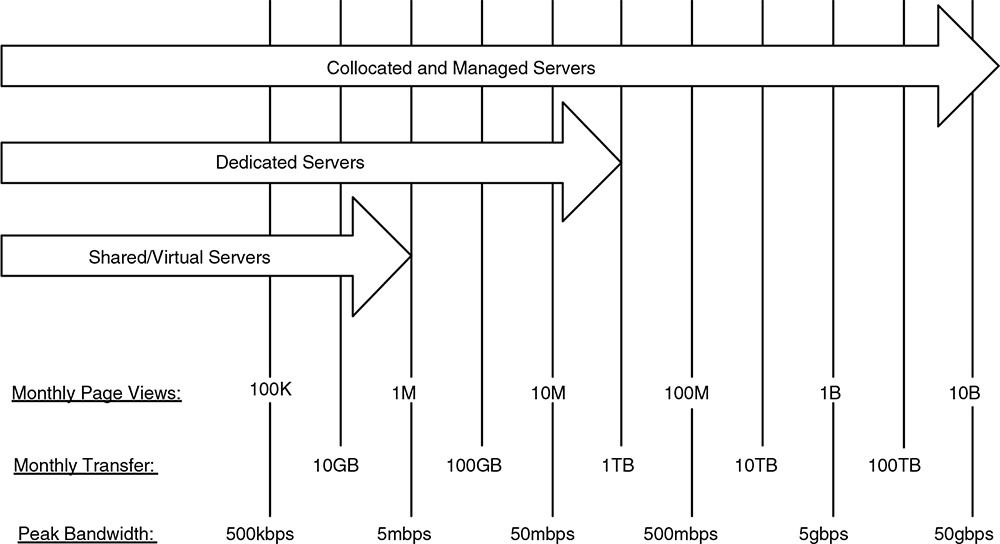| Lesson 6 | Virtual servers |
| Objective | Common Web Server Conventions including Virtual Servers |
Web and Virtual Servers
Most enterprise-grade Web servers such as IIS and Apache Server allow you to create multiple instances of themselves on the same machine. In other words, after you install Apache Server once, you can then tell it to serve up two or more sites.
You can bind multiple IP addresses to the same NIC, or place multiple NICs into the computer. You can then tell your Apache Server to serve each of these sites discretely on each of the IP addresses. This way, a user can go to www.onecompany.com (207.18.188.235) and www.anothercompany.com (207.18.188.236), and not even realize that the sites exist on the same server.
You can bind multiple IP addresses to the same NIC, or place multiple NICs into the computer. You can then tell your Apache Server to serve each of these sites discretely on each of the IP addresses. This way, a user can go to www.onecompany.com (207.18.188.235) and www.anothercompany.com (207.18.188.236), and not even realize that the sites exist on the same server.
- IP address: An IP address is a number that is used to uniquely identify computers connected to the Internet.
- Network interface card (NIC): A network interface card is an expansion board that connects a computer to a network. Most NICs are designed for a particular type of network, protocol, and media, although some can serve multiple networks.
Website Traffic
The second criterion used to segregate the four classes of web-hosting services is the amount of Internet traffic their websites generate. Figure 3-6 allows one to pinpoint a website according to its traffic volume. For instance, if a site will deliver
approximately 5 million page views per month, shared servers will be unsuitable. Dedicated servers or colocation (with or without managed services) should be considered instead. If a site will deliver only 100,000 page views per month, shared servers will likely be the best alternative. All three of the traffic measurements (page views, transfer, and peak bandwidth) are related to one another, but the relationships are not simple.
If the monthly page views increase, for example, so will the volume of data transfer and the demand for peak bandwidth. But the ratios of these measurements (or metrics) to one another are not constant. For instance, two websites may each deliver one million page views per month, but if the pages on one site are twice the size of the pages on the other, the former data transfer of the website will be twice that of the latter site.
Measuring web site traffic and bandwidth

Click the link below to learn more about virtual servers and DNS.
DNS Servers
In the next lesson, you will learn about default documents, directory browsing, and error messages.
DNS Servers
In the next lesson, you will learn about default documents, directory browsing, and error messages.